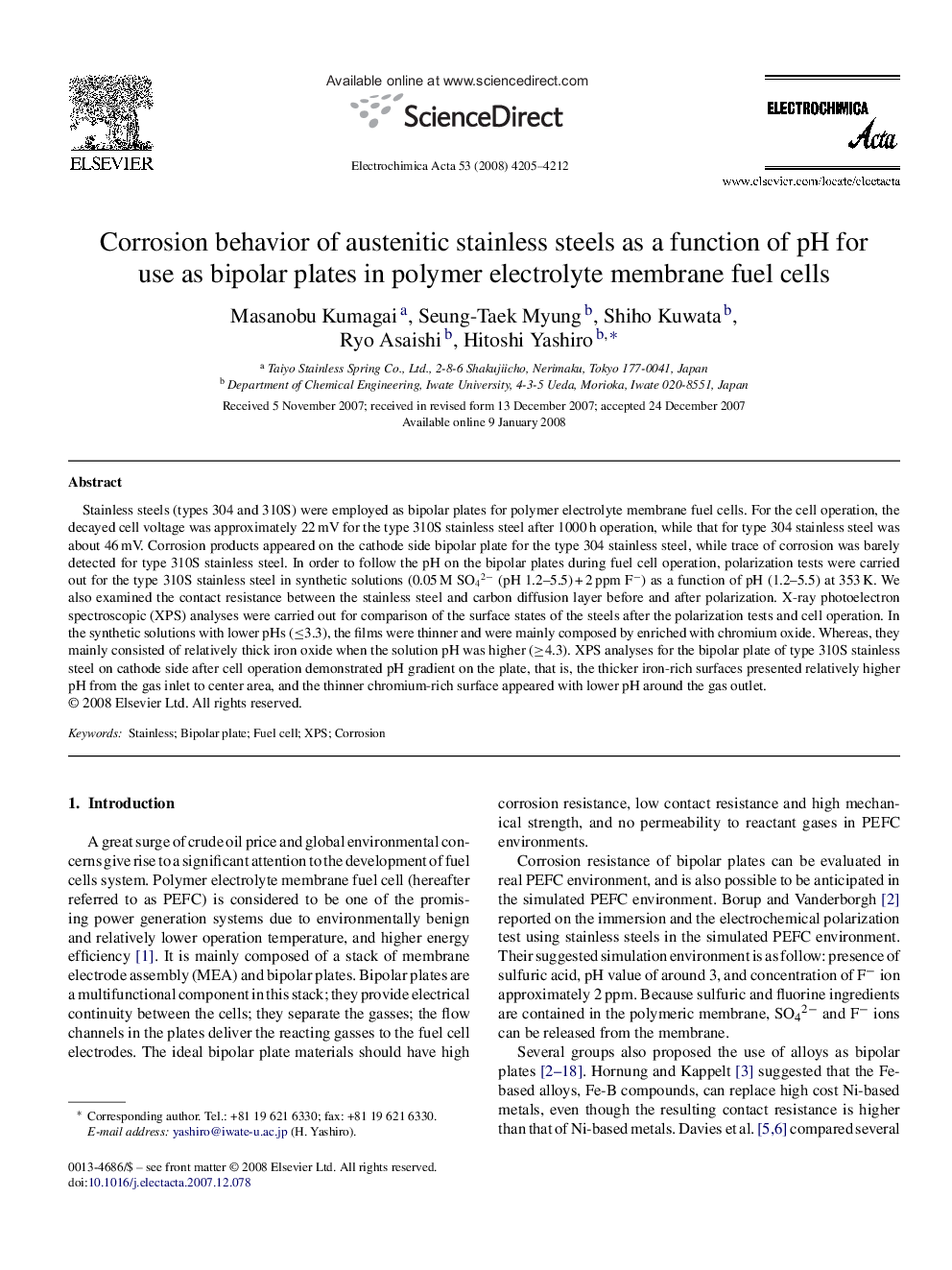| Article ID | Journal | Published Year | Pages | File Type |
|---|---|---|---|---|
| 192943 | Electrochimica Acta | 2008 | 8 Pages |
Stainless steels (types 304 and 310S) were employed as bipolar plates for polymer electrolyte membrane fuel cells. For the cell operation, the decayed cell voltage was approximately 22 mV for the type 310S stainless steel after 1000 h operation, while that for type 304 stainless steel was about 46 mV. Corrosion products appeared on the cathode side bipolar plate for the type 304 stainless steel, while trace of corrosion was barely detected for type 310S stainless steel. In order to follow the pH on the bipolar plates during fuel cell operation, polarization tests were carried out for the type 310S stainless steel in synthetic solutions (0.05 M SO42− (pH 1.2–5.5) + 2 ppm F−) as a function of pH (1.2–5.5) at 353 K. We also examined the contact resistance between the stainless steel and carbon diffusion layer before and after polarization. X-ray photoelectron spectroscopic (XPS) analyses were carried out for comparison of the surface states of the steels after the polarization tests and cell operation. In the synthetic solutions with lower pHs (≤3.3), the films were thinner and were mainly composed by enriched with chromium oxide. Whereas, they mainly consisted of relatively thick iron oxide when the solution pH was higher (≥4.3). XPS analyses for the bipolar plate of type 310S stainless steel on cathode side after cell operation demonstrated pH gradient on the plate, that is, the thicker iron-rich surfaces presented relatively higher pH from the gas inlet to center area, and the thinner chromium-rich surface appeared with lower pH around the gas outlet.
